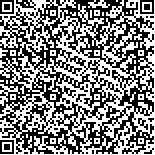|
|
| |
|
|
| 本文已被:浏览 4152次 下载 2251次 |

码上扫一扫! |
|
|
| 热灭活WSSV诱导的中国明对虾(Fenneropenaeus chinensis)在不同温度下的免疫致敏反应 |
|
曹家旺1,2,3, 孔 杰1,2, 罗 坤1,2, 栾 生1,2, 曹宝祥1,2, 史晓丽1,2, 卢 霞1,2, 冯亚萍1,2,3, 王 军1,2,3, 王明珠1,2,3, 孟宪红1,2
|
|
1.农业部海洋渔业可持续发展重点实验室 中国水产科学研究院黄海水产研究所 青岛 266071;2.青岛海洋科学与技术国家实验室 海洋渔业科学与食物产出过程功能实验室 青岛 266071;3.上海海洋大学水产与生命学院 上海 201306
|
|
| 摘要: |
| 本研究拟探究经热灭活的白斑综合征病毒(White spot syndrome virus, WSSV)能否诱导中国明对虾(Fenneropenaeus chinensis)产生免疫致敏反应。将具有典型白斑综合征症状的对虾肌肉剁碎后经60℃灭活1 h,采用单尾定量口饲的方法,连续6 d投喂不同水温条件(15℃、23℃、28℃、32℃)下的实验组对虾(E15℃、E23℃、E28℃、E32℃);同时设置常温(23℃)条件下阳性对照组C23℃(投喂未经灭活的WSSV毒饵)、对照组CF23℃(只投喂商业配合饲料)。在实验第13天对存活个体进行第二次人工WSSV感染,结果显示,WSSV经60℃处理1 h可彻底失活,表现为连续投喂6 d至第二次人工感染期间无对虾死亡,而阳性对照组C23℃死亡率为100%。截止实验第19天,E15℃、E23℃、E28℃、E32℃各组存活率分别为80.41%、33.29%、8.47%、16.43%,CF23℃组的存活率为8.89%,E15℃组与其他各实验组差异极显著(P<0.01),E23℃与CF23℃、E28℃、E32℃组差异显著(P<0.05),E28℃和E32℃组差异不显著(P>0.05);对各组实验材料进行WSSV绝对荧光定量检测,结果显示,经热灭活WSSV诱导的中国明对虾二次感染WSSV后,28℃环境下病毒增殖速度最快,高温(32℃)和低温(15℃)都会不同程度抑制WSSV的增殖速度。实验表明,热灭活WSSV可以诱导中国明对虾产生免疫致敏反应,对受WSSV感染的中国明对虾具有一定的保护作用;温度与WSSV的增殖速度密切相关。 |
| 关键词: 免疫致敏 热灭活 存活率 绝对荧光定量 白斑综合征病毒 |
| DOI:10.11758/yykxjz.20151223001 |
| 分类号: |
| 基金项目:国家自然科学基金(31372523)、青岛海洋科学与技术国家实验室鳌山科技创新计划项目(2015ASKJ02)和泰山学者良种工程项目共同资助 |
|
| Immune Priming Response Induced by Heat-Inactivated WSSV on Fenneropenaeus chinensis at Different Temperature |
|
CAO Jiawang1,2,3, KONG Jie1,2, LUO Kun1,2, LUAN Sheng1,2, CAO Baoxiang1,2, SHI Xiaoli1,2, LU Xia1,2, FENG Yaping1,2,3, WANG Jun1,2,3, WANG Mingzhu1,2,3, MENG Xianhong1,2
|
|
1.Key Laboratory of Sustainable Development of Marine Fisheries, Ministry of Agriculture, Yellow Sea Fisheries Research Institute, Chinese Academy of Fishery Sciences, Qingdao 266071;2.Laboratory for Marine Fisheries Science and Food Production Processes, Qingdao National Laboratory for Marine Science and Technology, Qingdao;3.College of Fisheries and Life Science, Shanghai Ocean University, Shanghai 201306
|
| Abstract: |
| This study was designed to explore whether the heat-inactivated WSSV could induce immune priming response on Fenneropenaeus chinensis. During the initial 6 days, four experiment groups (E15℃, E23℃, E28℃, and E32℃) were fed with typical symptoms of WSSV prawn muscle, which was dealt with at 60℃ for 1 h using the equivalent and quantitative test method. At the same time, we set a positive control group C23℃ (fed with the unheat-inactivated WSSV muscle) and a control group CF23℃ (fed with commercial compound feed only). At the 13th day of the experiment, all shrimps were infected with WSSV again. The result showed that 60℃ could decrease the activity of WSSV absolutely, there were no dead shrimp in the initial 12 d, but the mortality of positive control group C23℃ was 100%. The survival rates of different experiment (E15℃, E23℃, E28℃, and E32℃) and control groups were 80.41%, 33.29%, 8.47% , 16.43% and 8.89%, respectively, after 19 days. The survival rate of E15℃ showed highly significant difference from other experiments (P<0.01). In addition, there was a significant difference between E23℃ experiment group and other experiment groups (P<0.05). Nevertheless, there was no significant difference between E28℃ and E32℃ groups (P>0.05). Compared to the results of absolute quantitation, it was found that the multiplication rate of WSSV was the highest under 28℃, high (32℃) and low (15℃) temperature would inhibit the multiplication of WSSV in the shrimps which accepted the subsequent rechallenge of WSSV after the heat-inactivated WSSV induced. Experimental results showed that heat-inactivated WSSV could induce immune priming response and provide some protection to the infected shrimp by WSSV. The multiplication rate of WSSV is closely related to temperature. |
| Key words: Immune priming Heat-inactivated Survival rate Absolute quantitation WSSV |
|
|
|
|